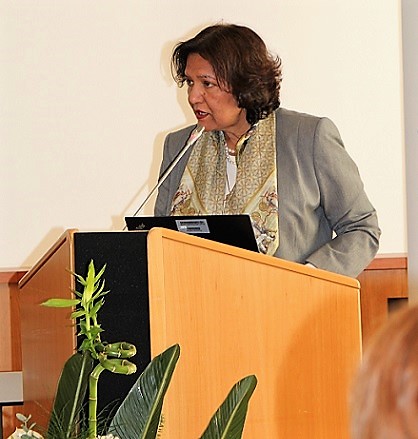Dear Minister Ekonomi, Minister Klosi, Deputy Minister Luci, General Director of INSTAT Ibrahimaj, Distinguished Guests,
It is a great pleasure to introduce today this event on Promoting Inclusion in Albania: Diagnostics and Policy Options, organized by the Albania Institute of Statistics and the World Bank.
Promoting Inclusion is important and necessary as it can improve lives of citizens – and this is what development is all about. It aims to ensure that all individuals and families benefit from their country’s economic and social progress by having the opportunity to participate in, contribute to and benefit from such progress. Hence, promoting inclusion is not a means but an end in itself.
It is estimated, for example, that close to 20 percent of aggregate income is potentially lost in Albania from gender gaps in the labor market. This gap needs to be addressed through appropriate policy and program interventions. Similarly, the potential of lagging regions in the country needs to be more aggressively tapped for boosting economic growth. Today’s discussion, and the reports that motivate it, provide timely diagnostic work that can inform our conversation today and, we hope, also guide future policies on promoting inclusive growth in Albania.
The first report "Portraits of Poverty and Inequality in Albania", takes a geographic lens to inclusion. It presents poverty maps using the 2011 Census data and the Living Standard Measurement Survey of 2012, to present detailed geographical poverty estimates. We recognize that this analysis and information is based on 2011 and 2012 data that presents data that is over four-five years olds. Given the recent improvements in economic growth rate and the slight upward shift in employment, it is likely that poverty rate is decreasing in Albania. However, we hope that the analysis being presented today can still help policymakers, development partners and other stakeholders to identify the geographic parts of Albania with pockets of poverty, and to inform targeted efforts to achieve the goals of reducing poverty and inequality. A good example is the social assistance reform which is being guided by this data.
The second report, "Ten Messages About Youth Employment in South East Europe", is a regional report focusing on youth and women that also presents useful messages for Albania. It shows that the South East Europe region is still ridden by overall high levels of unemployment and low labor force participation, particularly among women and youth. Albania has the highest share of youth as a percent of the total labor force given its demographics, and also the highest share of youth not in employment, education or training in Europe. The good news, according to our recent ECA economic update of November 2016, is that Albania has marked positive development regarding employment with 2.7 percentage points higher in the first quarter of 2016 compared with same period of 2015 which is the highest rate since early 2012. The slight decline in unemployment was mostly driven by changes in youth unemployment (15-29), especially for young women for whom it declined by 5 percentage points.
In this environment when growth is increasing in Albania, the report also puts forward encouraging findings that it takes less economic growth to create jobs for youth than for adults in the region. It highlights issues beyond growth that can be addressed to lead to relatively faster job creation for youth. These issues include barriers and disincentives that youth face, some are more for young women, embedded in markets and formal and informal institutions, related to labor regulations, skills, labor taxation, access to productive inputs, attitudes, social norms and lack of access to childcare.
A key takeaway from these reports is that while a lot has been done and is being done to promote inclusive growth in Albania, there is still lot more to do.
First, there have been good initial results from implementing multi-pronged reforms aimed at sustaining and accelerating economic growth. These results strengthen the rationale and need for further reforms to maintain macroeconomic stability, stimulate private sector activity, enhance the effectiveness of the public sector, and build resilience to external shocks. Staying the course and deepening these reforms is essential and particularly relevant in the face of a challenging European and global environment.
Second, and our topic of the day, now is also the time to make faster and deeper progress in promoting inclusion. The encouraging news is that there is room for policy actions to promote inclusion. This leads then to the questions: What are policy priorities to ensure that no one is left behind in the growth process? What can be done to ensure that women and youth do not face barriers and disincentives to work that limit their gains from and contribution to the growth process? How can development partners support this process? Some of these questions will be addressed during the course of this afternoon.
The first session today will present the results of the poverty maps in Albania while the second session will focus on the Messages from the Youth Report. For the first session, I would like to introduce Carolina Sánchez Páramo, Practice Manager for the Poverty and Equity Global Practice of the World Bank, who will moderate this session.
In closing, I would like to share with you that the World Bank has been partnering with Albania in several of these areas through a range of instruments including policy and analytic work – such as the reports being presented today. The Bank’s ongoing portfolio of over $550 million is anchored in Albania’s key reforms and priority sectors. We are proud to be your longstanding development partner ever since Albania joined the World Bank Group over two decades ago. We look forward to a rich discussion and you can count on the World Bank’s continued commitment to support Albania and its programs for promoting inclusion and gender equality.
Thank you.

